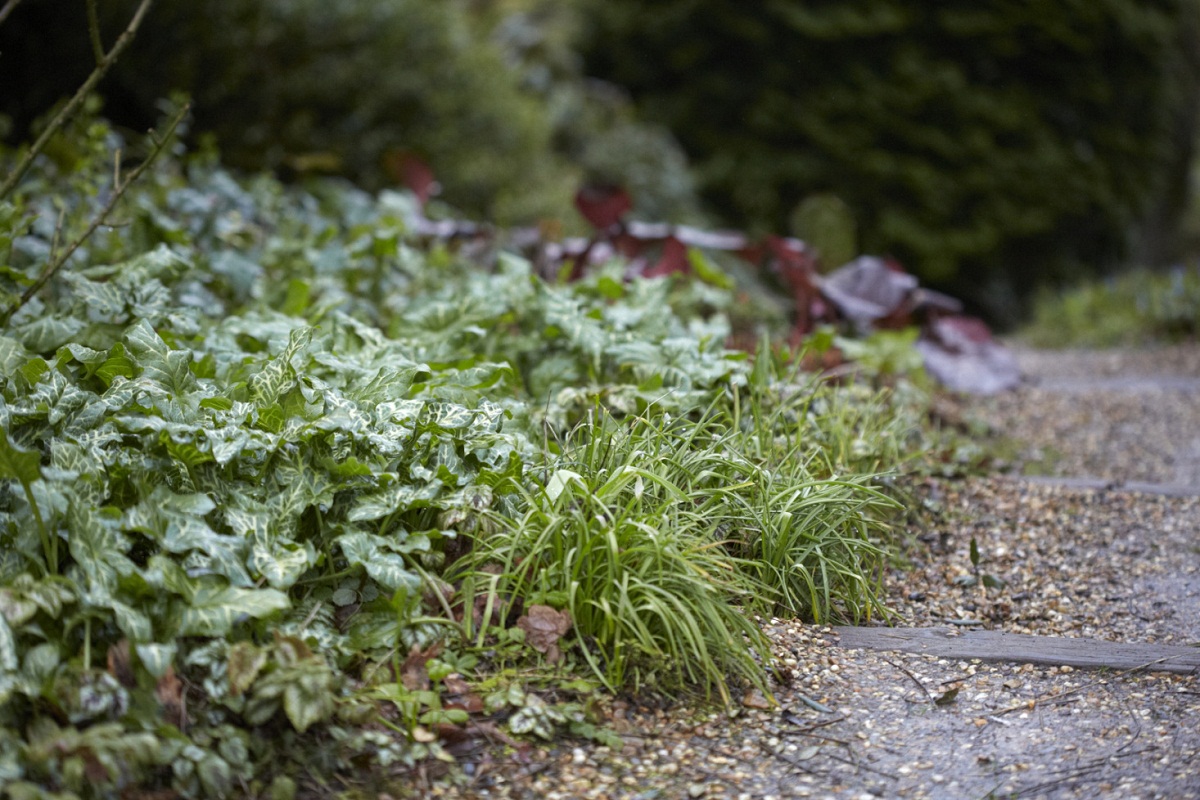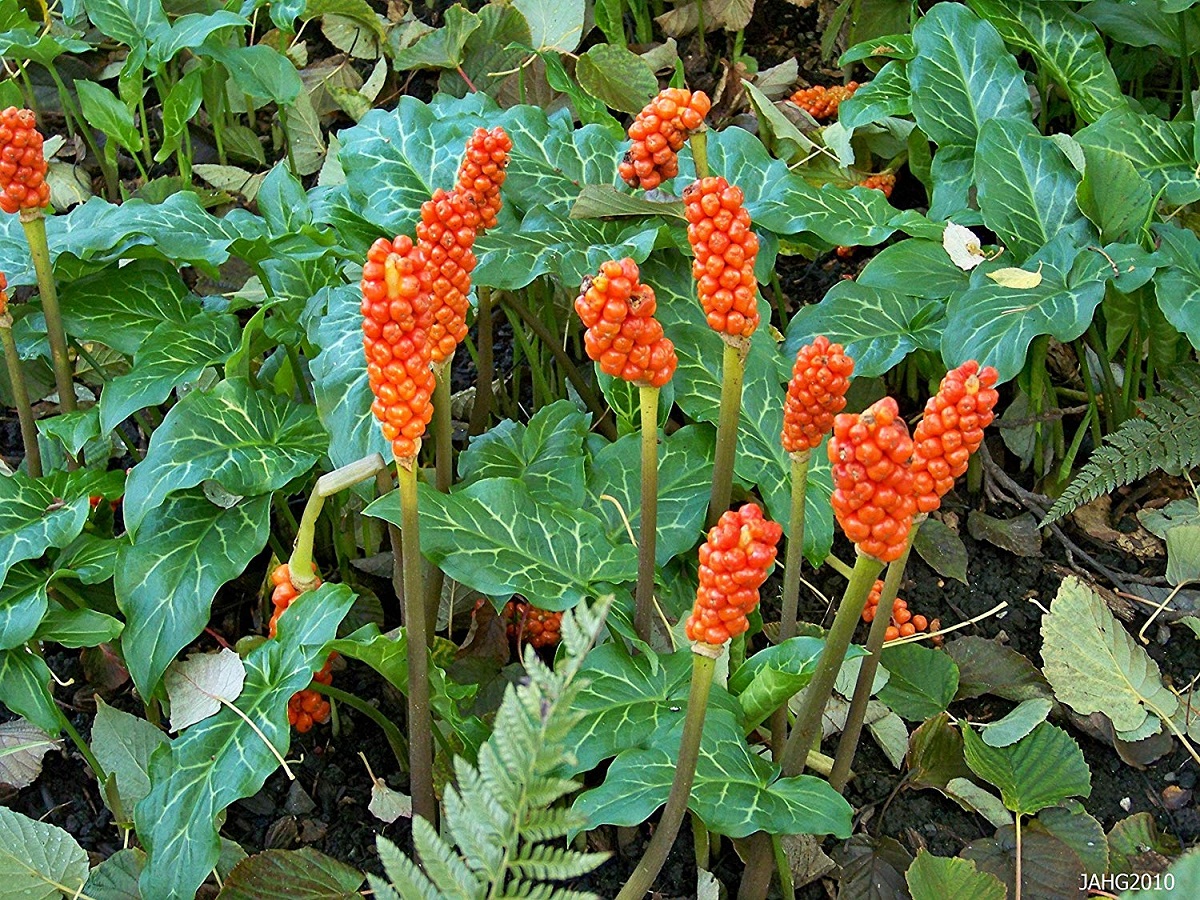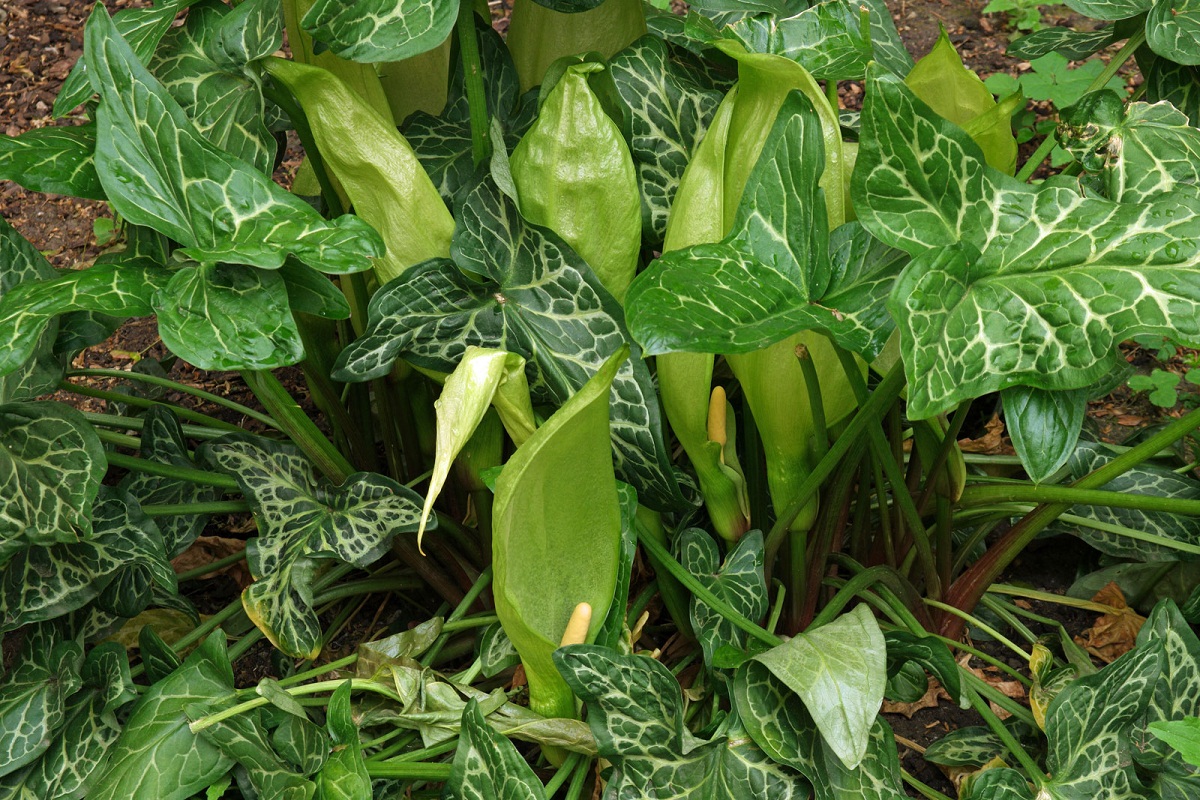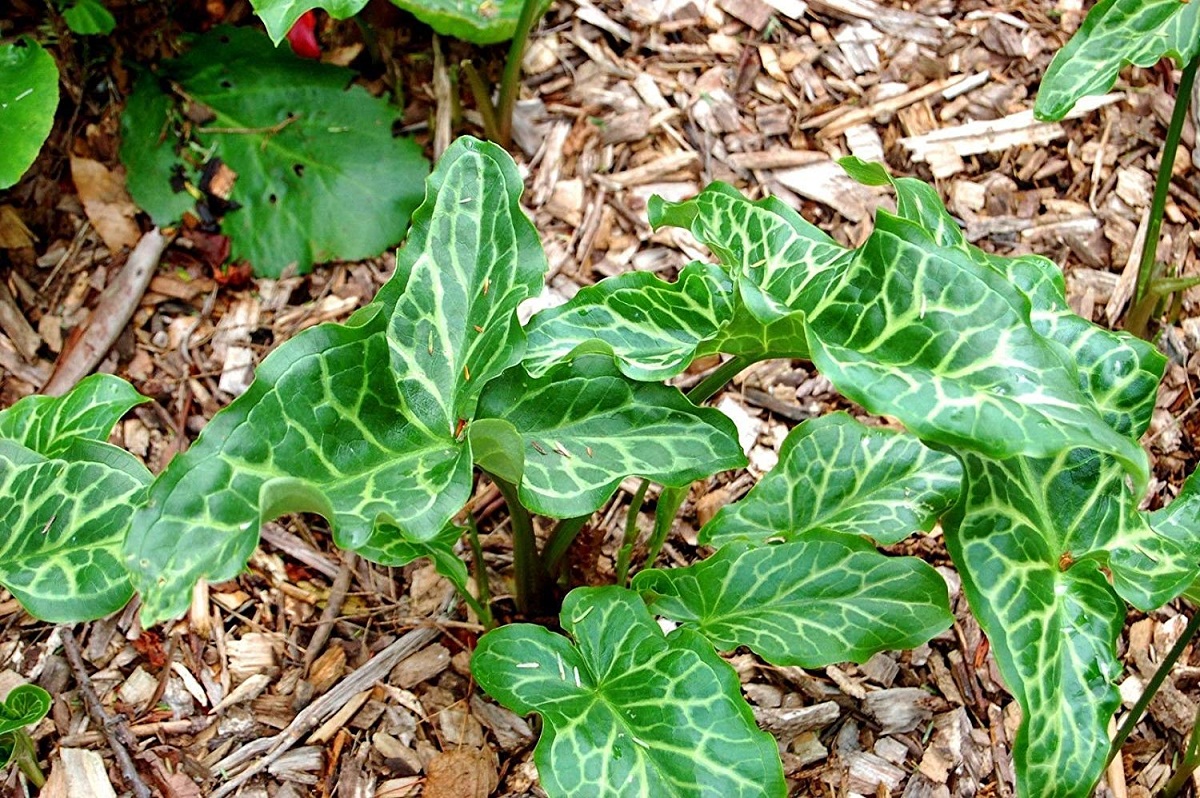
Plant Arum Italicum stands out for being a phanerogamic species that is within the family Araceae, which is popularly called Aro, Tragontino or Flor de Primavera, etc. It is a herbaceous, vivacious, rhizomatous and perennial plant which grows about 25-40cms and has a horizontal rhizome of approximately 2cm.
From

La Arum Italicum consists of a plant native to both Central Asia and Mediterranean Europe, being quite common to find it in avenues, hedges and banks. However, it can be said that this phanerogamic species is characterized by inhabiting gardens, forests and shady areas around the Mediterranean area.
Spring flower characteristics
It is a perennial, fleshy, herbaceous and lively, which sprouts from a tuber and has the capacity to reach around 60cms high, but usually most of the specimens tend to range between 20-40cms.
The Arum italicum, also known as Spring Flower, is provided by large basal leaves, sagittate and lanceolate, without stems, with divergent lobes and long petioles, which are normally whitish around the upper surface and a yellowish-green tone on the underside, presenting white spots or streaks.
The same They are usually about 25 cm long and a spear-like shape, being born throughout the fall, after the fruits ripen, and withering or drying up the moment its flowers are born again.
It should be noted that its flowers are usually small, with a yellowish spadix, which in some cases is tinged with purple; and as can be guessed from its popular name, the Arum Italicum it normally blooms in the middle of spring. Offers fruits consisting of berries, grouped in a single cluster, which at the beginning are green and then turn red; It must be said that, although they may be pleasant to look at, the red berries are toxic to people.
Uses of Arum Italicum
Decorative
Possible use the spring flower to develop wooded spaces whose purpose is completely aesthetic or in order to give a little privacy and create green walls that offer privacy by having some support or previously installed fence.
Therapeutics
Although it is possible to use this plant for a therapeutic purpose, the truth is that due to its high level of toxicity, especially in the area of the tuber and leaves, its domestic use is usually inadvisable.
Human feeding
The tuber of this plant has been used as human food in La Gomera (Canary Islands), especially during periods of scarcity; preparing it in different ways and changing the water several times to reduce the toxic sustance with which it counts and which causes great bitterness.
Medicinal
The rhizome of this plant is usually used for medicinal purposes; However, it is essential to note that it could become toxic, although when subjected to heat its level of toxicity disappears. Either way, its use must always be carried out under the supervision of a specialist and you have to make sure to take special care at all times while it is being used.
Likewise, the rhizome stands out due to the great properties it offers when used as an expectorant, allowing it to stimulate decongestion in case of bronchitis, colds and some other pathologies related to the respiratory system. And a less common use of it is usually as a kind of purge. In this case, careful treatment is required, without forgetting that the rhizome can be toxic by not cooking it well before its ingestion.

For its part, within the Balearic Islands the tuber has been used as a treatment to relieve toothache, applying directly to the affected area, the water obtained after its decoction. Similarly, in Formentera, Gerona and Mallorca It has been used as a great analgesic and anti-inflammatory in the treatment of rheumatism, bruises or bruises and muscle pain, applying both its leaves and its previously crushed fruits as an ointment.
La Arum Italicum It is usually totally discouraged when giving it any other use by internal route, since although it has been attributed numerous other uses within the treatment for stomach ulcers, the truth is that due to the toxicity it has and due to the effects counterproductive that it is capable of generating, this plant is not recommended.
Cultivation and care
The species Arum Italicum tends to develop better when grown in soils that have a Neutral, acidic or alkaline pH; furthermore, its underground part may grow vigorously when being inside supports that have a clay, sandy or loamy texture, since they are usually capable of remaining mostly humid.
Taking this into account, it will be necessary to adjust the risks in an intermediate point (trying to ensure that soil moisture remains stable), paying attention to certain factors, such as temperature, substrate texture, ambient humidity and sun exposure, among others.
In relation to the lighting needs of the Arum Italicum, it is possible to point out that it is an undemanding plant and which could be located within completely shady spaces, with semi-shade or a lot of shade and even, in places where they are directly exposed to the sun, without affecting their development.
Regarding its resistance to adverse conditions, it can be mentioned that the minimum range of temperatures that the spring flower is able to withstand consists of those of Zone 6, so it can even withstand frost well.
In the same way, it should be said that although it is usually cultivated in humid and shady spaces within gardens, for example in undergrowth, the truth is that the This can also be grown in pots, although in this case it is necessary to make sure to protect it through dry leaves.
In addition, they will have to have a rich and soft soil composed of 1/3 of garden soil, another of peat and one of sand. It is important to water it periodically but making sure not to create puddles on the ground. In case of growing it inside the garden, it will be enough fertilize the soil with a little manure and add a few doses of mineral fertilizer.
Plagues and diseases

Arum italicum is characterized by being a plant that has a great resistance not only against pests, but also to diseases that often affect gardens, so you only have to pay attention to watering to avoid puddles and the possible presence of slugs. In addition, it could be affected by coccoid and aphid pests or even fungi.